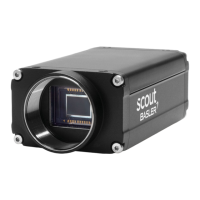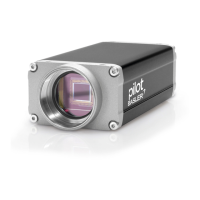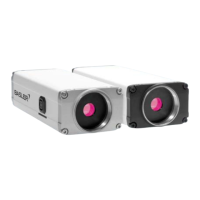AW00089317000 Standard Features
Basler ace GigE 257
10.9 Binning
10.9.1 Binning on Monochrome Cameras
Binning increases the camera’s response to light by summing the charges from adjacent pixels
into one pixel. Two types of binning are available: vertical binning and horizontal binning.
With vertical binning, adjacent pixels from 2 rows, 3 rows, or a maximum of 4 rows in the imaging
sensor array are summed and are reported out of the camera as a single pixel. Figure 103
illustrates vertical binning.
On all cameras, the binning feature is available on monochrome cameras only,
except the acA1920-25 and acA2500-14, where also the color camera allows
binning.
On the acA750-30gm, only horizontal binning by 2 is available.
acA1920-25gm and acA2500-14gm
For these cameras vertical binning works in a different way:
Vertical binning by 2 and by 4:
The gray values of adjacent pixels from 2 rows or from 4 rows are averaged.
As a consequence, the signal to noise ratio will be increased while the
camera’s response to light will not be increased.
Vertical binning by 3:
The gray values of adjacent pixels from 3 rows are combined.
As a consequence, the signal to noise ratio will be decreased while the
camera’s response to light will be slightly increased.
We recommend using vertical binning by 2 or by 4.
Vertical Binning by 2 Vertical Binning by 3 Vertical Binning by 4
Fig. 103: Vertical Binning on Monochrome Cameras

